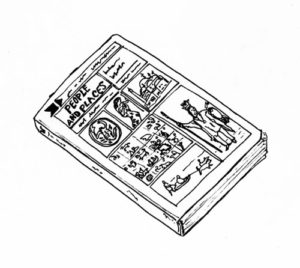You will be working with children. Children who are cared for by adults, adults fleeing from difficult situations in their home countries.
You can see your work with these kids as a collaboration because that would be good practice. You can also so it as a collaboration because as a precarious worker you are dependent on them for your funding.
Your collaborators may be overcoming language and cultural barriers, and feeling tensions between home life and values and new values and traditions of Germany.In addition to dealing with typical childhood challenges, these kids will likely be facing discrimination and racism and dealing with their and their family’s trauma.(1)
In Germany, refugee children have the right to attend school. In the streets and in school, these kids may be encountering hostile situations. As a precarious worker, you may not have any real connection to the kid’s parents, extended family or to the formally recognized network of caregivers. Family and people such as teachers, settlement house social workers or others that can really help them through trauma and the racism they face on a day-to-day basis. You may sense these things, but due to your precarious labor and relation situation, you may not have the pull to assist in direct healing and care.
So, while you might not really have any support to help the difficulties you encounter in your collaborating kids’ lives, remember one thing: you don’t need to make there live’s any more difficult than they already are. It is best not to make more and unnecessary demands on their interests and attention in order to produce artworks: it won’t feel good for you or the kids, it will likely not be fun for you, and it simply will not work.
Know that at work, tensions and challenges will exist, (see “This is the Work”) and will play out through the children’s individual and relational behavior. Know that both surprising social dynamics and individual mental health issues may be at play. If you knew more about the kids and if you had access to careworkers accountable to them, you might be able to understand issues and dynamics involved in the difficulties. But you may not.
Without structural support, observation and patience are your two best tools. Understand that
a. you may or may not be working with traumatized individuals. You don’t know, and in some ways it actually doesn’t matter.
b. you may be navigating a lot of communication problems, you may have no shared working language.
c. you may be challenging gender norms that the children are hearing at home or in school… which is fine.
d. you may be challenging behavior norms that the children are hearing at home or in school…
which is fine.
You will quickly come to appreciate that one of the strengths of many refugee families is their family structures- and that if your are working with one child, you may be working with their siblings and relatives. This may help you.
As an precarious artist, you offer the children two things- a connection to someone from outside of home or school, and to someone skilled in creative approaches.
By being aware of the structural and psychological tensions possibly at play in your collaborative setting, you have a lot to work with.
….
(1) As refugees, these children have definitionally been exposed to traumatic situations. Studies suggest that around 30% of refugee children are, by clinical definition, traumatized.
“At present, it cannot be stated with certainty what the prevalence of mental disorders is among refugees in Germany, but preliminary findings of a study in Syrian children in a refugee camp found PTSD in 26% of those aged 6 years and younger and in 33% of 7- to 14-year-olds.” in Fegert, J.M. et. al.“Psychosocial problems in traumatized refugee families: overview of risks and some recommendations for support services” Child Adolesc Psychiatry Ment Health 12:5, 2015.
….
